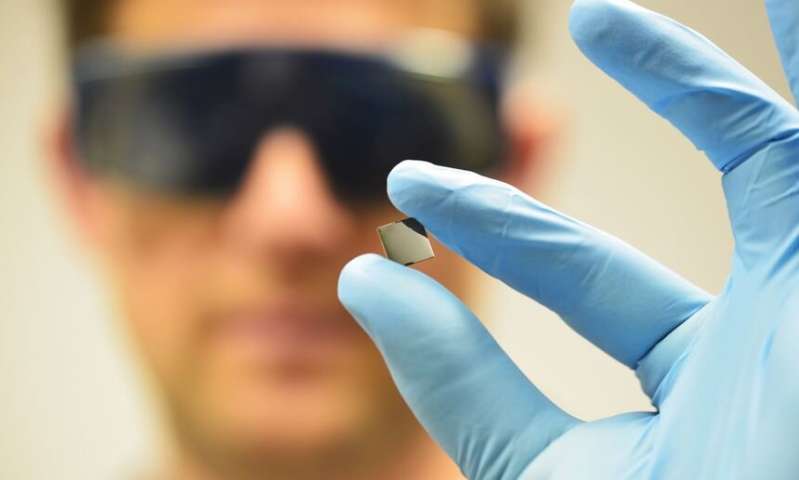
Electrochemistry is playing an increasingly important role: Whether it is fuel cells, electrolysis or chemical energy storage, chemical reactions controlled by electric current are used. The decisive factor in all these applications is that the reactions are as fast and efficient as possible.
An important step forward has now been taken by a team from TU Wien (Vienna) and DESY in Hamburg: They showed that a special material made of lanthanum, strontium, iron and oxygen can be switched back and forth between two different states: In one state the material is catalytically extremely active, in the other less so. The reason for this is the behavior of tiny iron nanoparticles on the surface, which has now been demonstrated in experiments at the German Electron Synchrotron DESY in Hamburg. This finding should now make it possible to develop even better catalysts. The result has been published in the journal Nature Communications.
Electrical voltage causes oxygen ions to migrate
"We have been using perovskites for our electrochemical experiments for years," says Prof. Alexander Opitz from the Institute of Chemical Technologies and Analytics. "Perovskites are a very diverse class of materials, some of them are excellent catalysts." The surface of the perovskites can help to bring certain reactants into contact with each other—or to separate them again. "Above all, perovskites have the advantage that they are permeable to oxygen ions. Therefore, they can conduct electric current, and we are taking advantage of this."
When an electrical voltage is applied to the perovskite, oxygen ions are released from their place within the crystal and start to migrate through the material. If the voltage exceeds a certain value, this leads to iron atoms in the perovskite migrating as well. They move to the surface and form tiny particles there, with a diameter of only a few nanometers. Essentially, these nanoparticles are excellent catalysts.
"The interesting thing is that if one reverses the electric voltage, the catalytic activity decreases again. And so far the reason for this was unclear," says Alexander Opitz. "Some people suspected that the iron atoms would simply migrate back into the crystal, but that's not true. When the effect takes place, the iron atoms do not have to leave their place on the material surface at all."

